This is the second of two posts about visits to beautiful temples in Karnataka in March, 2018. The first post covered our visit to Hoysaleswara Temple in Halebeedu. This post will document our visit to Chennakeshava Temple in Belur. Belur is a short 10 mile (16 km) drive to the west of Halebeedu. As soon as we finished our visit at Hoysaleswara Temple we headed out to Belur and the Chennakeshava Temple.
The Chennakeshava Temple was built over 103 years starting in 1117 AD, when it was commissioned by King Vishnuvardhana. Like Hosaleswara Temple, it was damaged in wars and fighting while and has been continually repaired, even to today. It has functioned as an active Hindu temple since it was founded. (Wikipedia)
You enter the temple through an ornate gate, known as a Gopuram. The gopuram and surrounding walls were added in the 14th century. The lighter colored material on the gopuram is recent reconstruction. Wikipedia mentions extensive repairs performed in the 1930s financed by the Mysore government and Wadiyar dynasty but is not clear on whether this particular repair was part of that work. As an active temple, there is quite a lot of activity outside the temple complex.
There are many structures within the temple complex. The pillar on the left is said to stand without any support but the carefully balanced weight of the pillar itself. The main Chennakeshava Temple, also known as Kesava temple, is in the center. It had an extensive wood and stone tower instead of a flat roof when it was built, but the tower was removed in the late 19th century. I am not clear on what the structure on the left is.
This is looking directly into the main entrance of the Chennakeshava Temple. You must leave your shoes outside, so it is nice that there are rugs laid out to help prevent burnt feet.
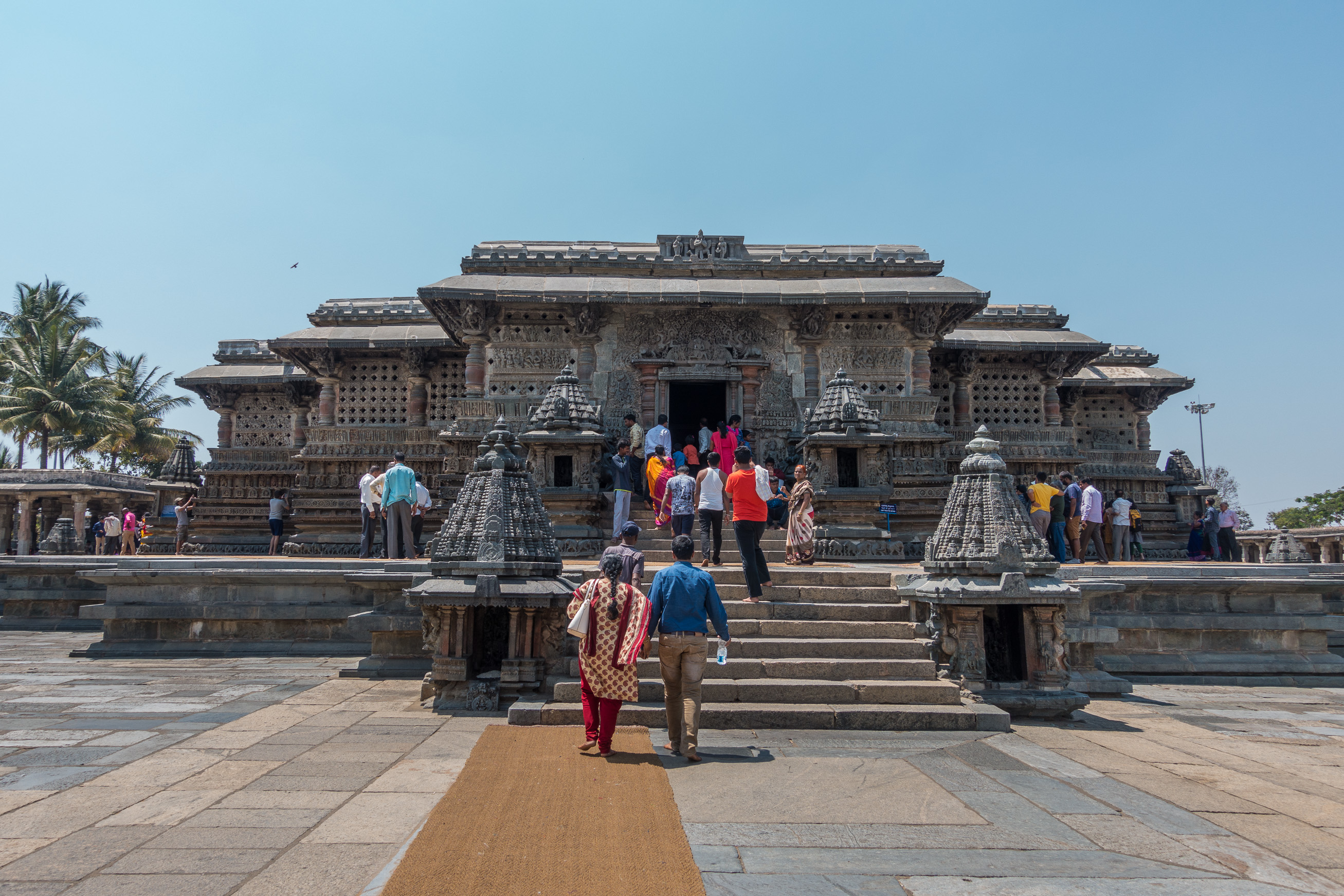
This is the entrance to Chennakeshava Temple. This is the main temple, also known as the Kesava temple.
The carvings inside the temple are intricate and beautiful. There are portrayals of scenes from the Mahabharata and Ramayana, the two major Sanskrit epics of ancient India. Along with the beautiful pillars you can see here, the ceiling is remarkable and the crowd here is clearly enchanted by it.
According to the description in Wikipedia, this ceiling sculpture has at its center “a lotus bud with Brahma, Vishnu and Shiva carved on it.” The figures at the corners are madanikas or Salabhanjika who are dancing or playing musical instruments.
The screen walls let in a moderate amount of light and the breeze. All of these temples are cooler inside that outside, even in the heat of the day.
This is a Nāga, a diety from Hindu mythology that can take many forms, including that of a snake. Their domain is the enchanted underworld. While they can be venomous, they often take a positive role in Hindu mythological stories.
Several sides of the temple complex have colonnades with small shrines. These are interesting photo opportunities and provide nice shade from the hot Sun.
These are wheels for the Ratha, a chariot used for annual festival parades. Ancient in design, but clearly maintained with modern technology.
These beautiful pillars are part of the Somyanayaki temple that was added in the 12th century. Somyanayaki is a form of the goddess Lakshmi.
There is a cistern, or as Wikipedia calls it, a tank, for water within the complex. The water has many fish and many turtles.
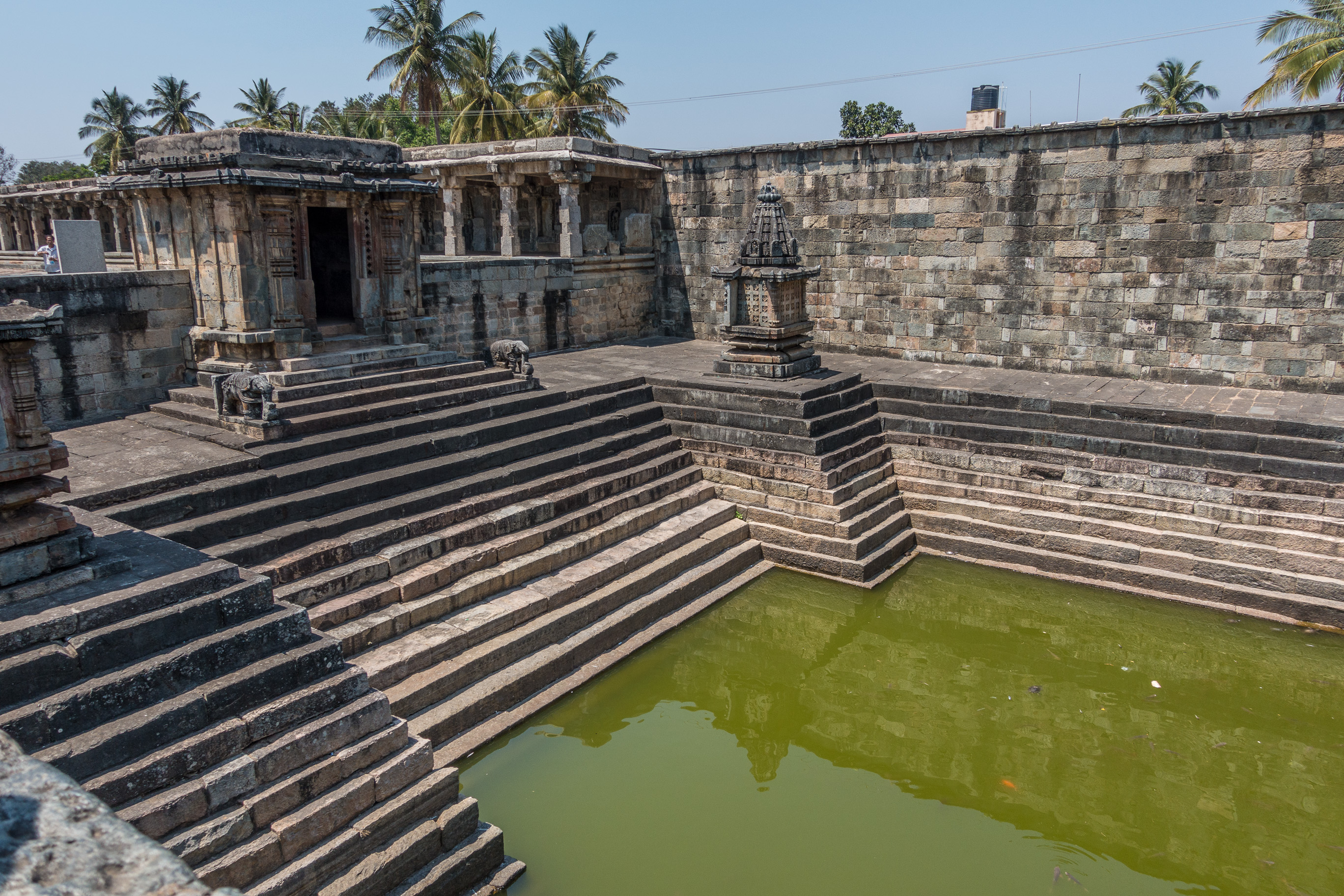
The temple has a large water cistern. If you look carefully, you can see both fish and turtles in the water.
Look closely and you can see quite a few turtles and fish.
This colonnade is just to the south of the entrance. The main temple is on the left. This picture is a high dynamic range (HDR) composite, using three shots taken three stops apart. That is how it has color and detail in the bright Sun and the dark of the shadows.
Looking back toward the gopuram, we can see how it leads the way into the temple complex. The free-standing pillar is on the right.
When we had finished our visit, we had fresh coconut milk directly from the coconut. The women who was serving it hacked off the top of those coconuts with great skill.
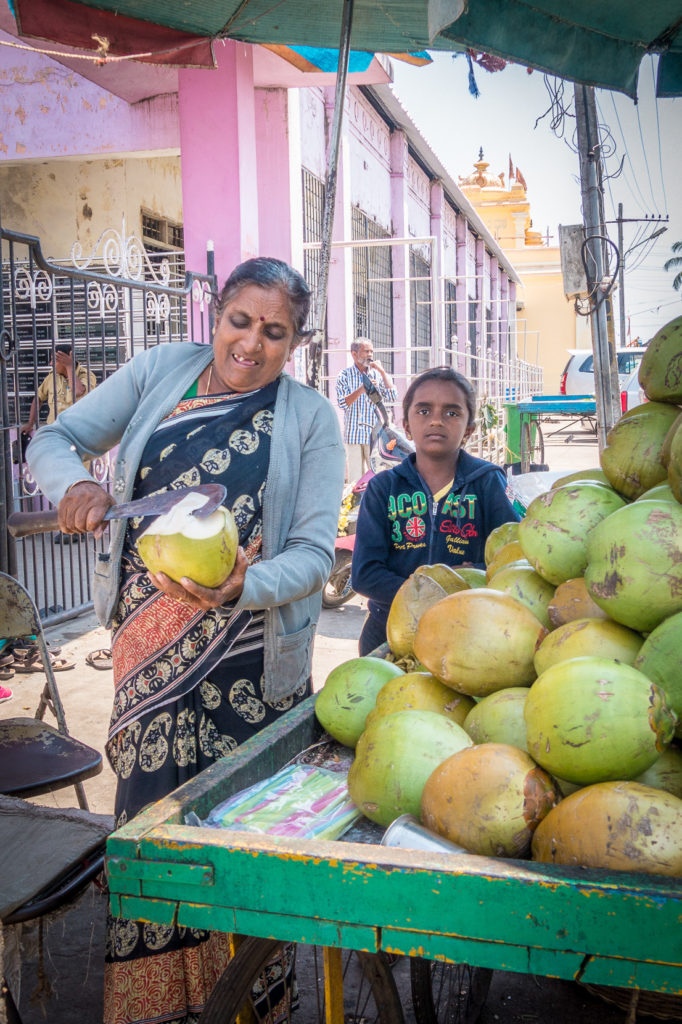
After our visit, we enjoyed some refreshing coconut milk. The woman preparing the coconut is expert with the knife.
Many thanks to Wikipedia and all of their contributors. Almost all of the historical content in this post came from Wikipedia and, in particular, the post on Chennakeshava Temple. I have learned quite a bit from writing up these posts. Upcoming posts from my March 2018 trip to India will be the Chennai beach, Mahabaleshwar, and Pratabgad Fort.
Finally, a repeat picture so Facebook picks up a good picture.

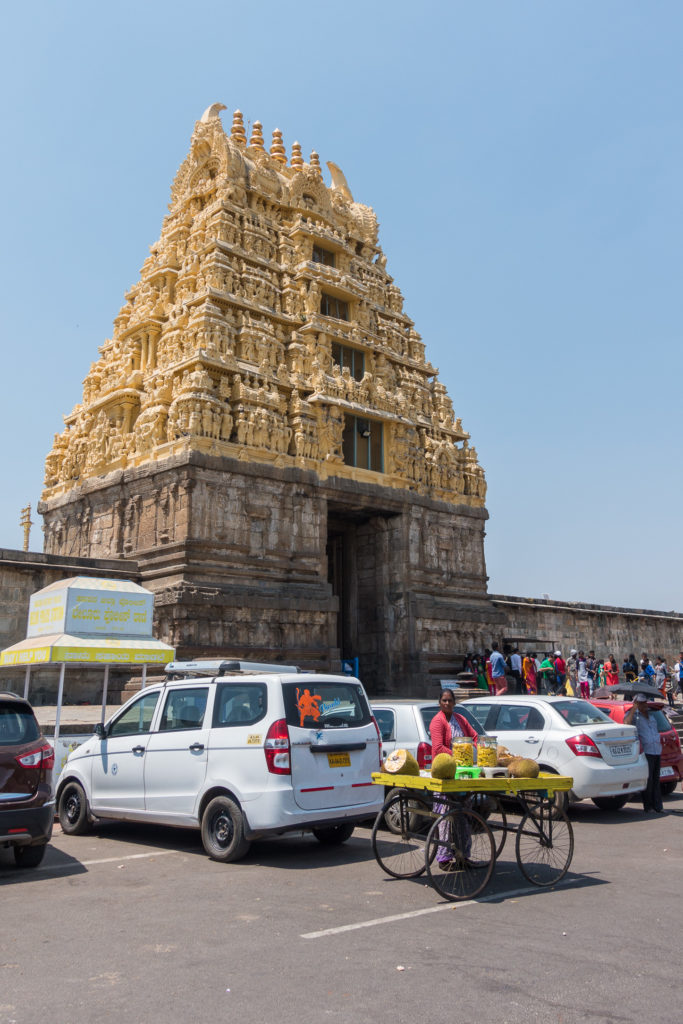

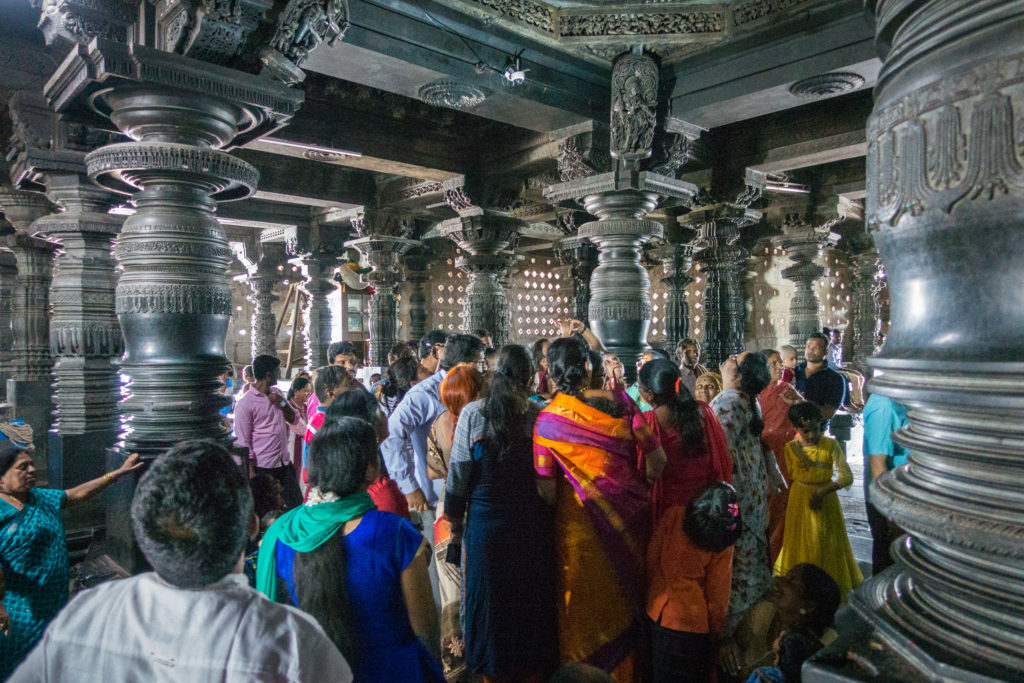
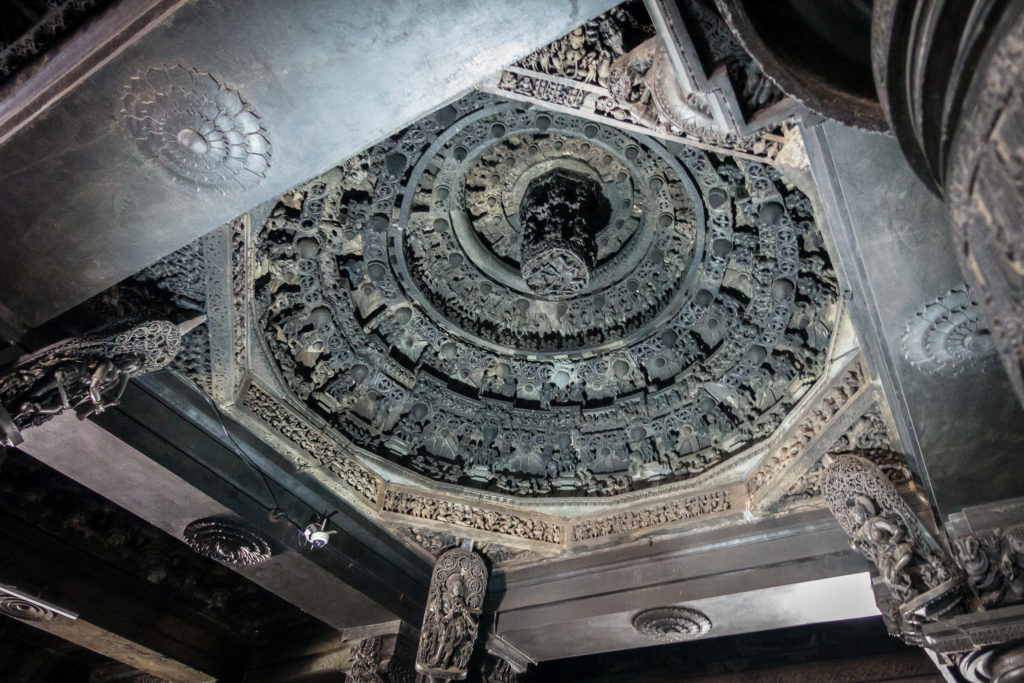
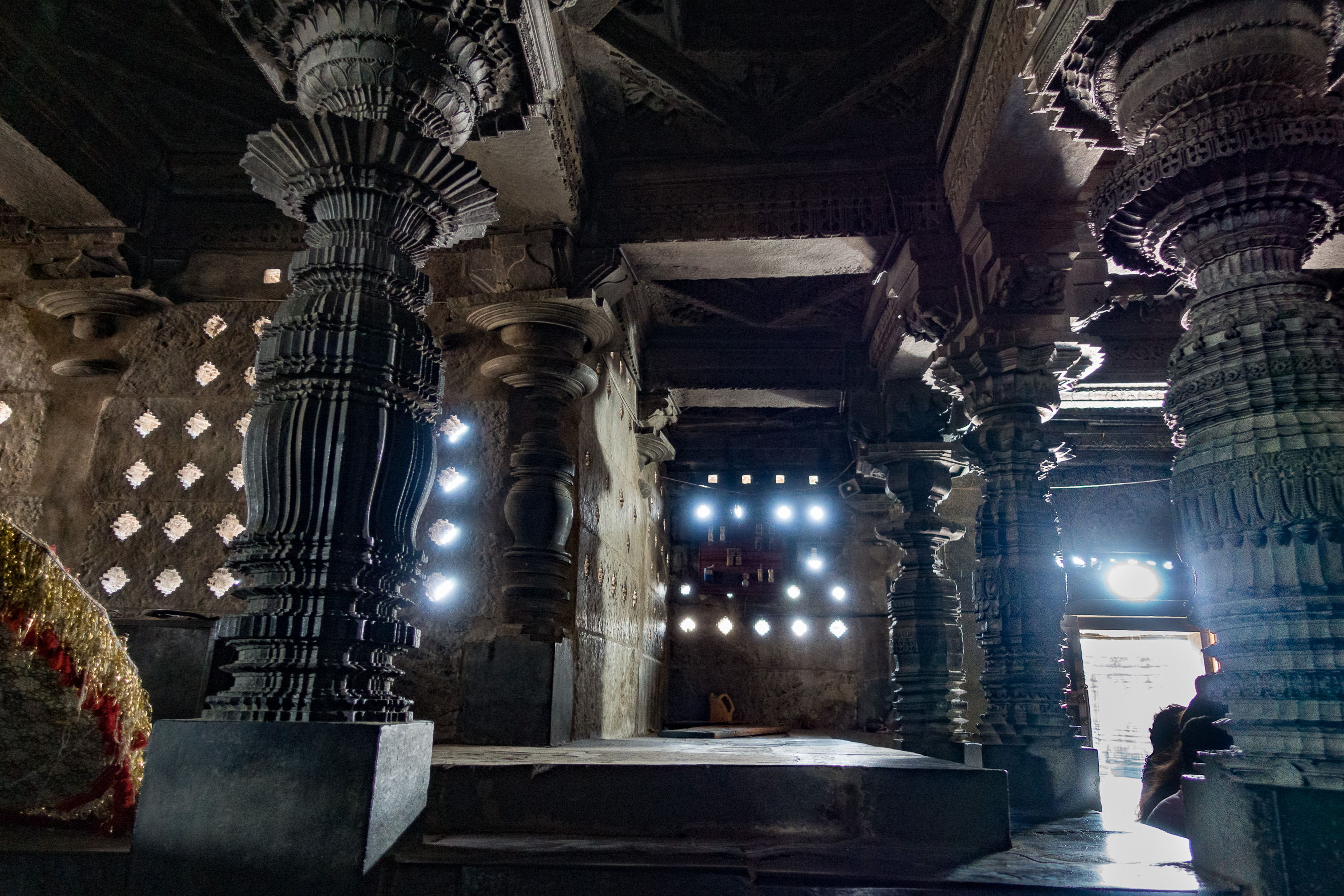
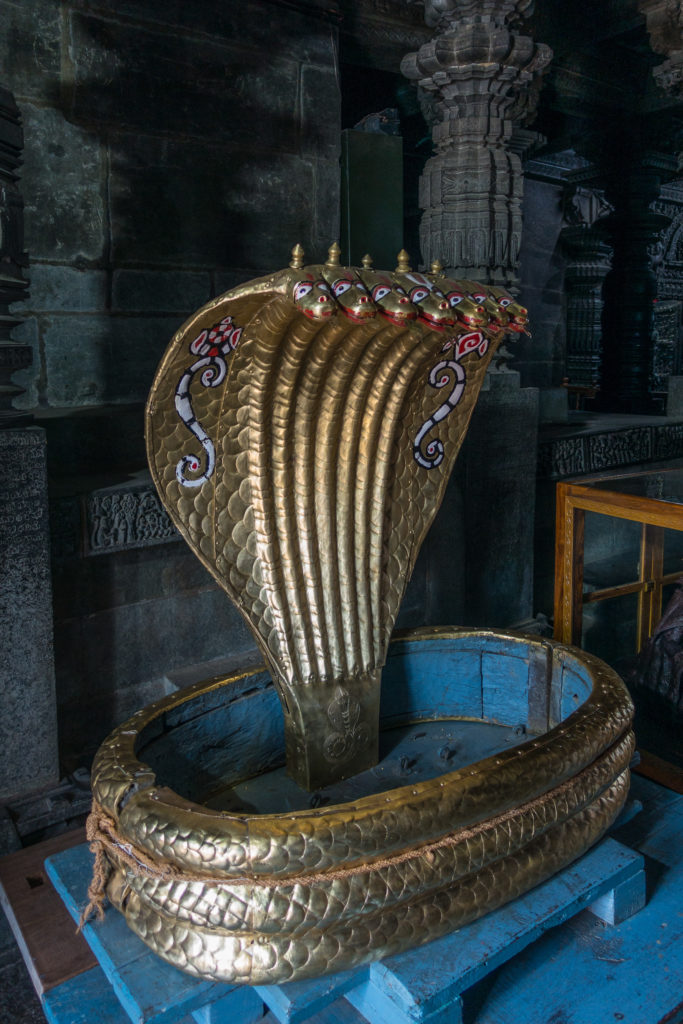

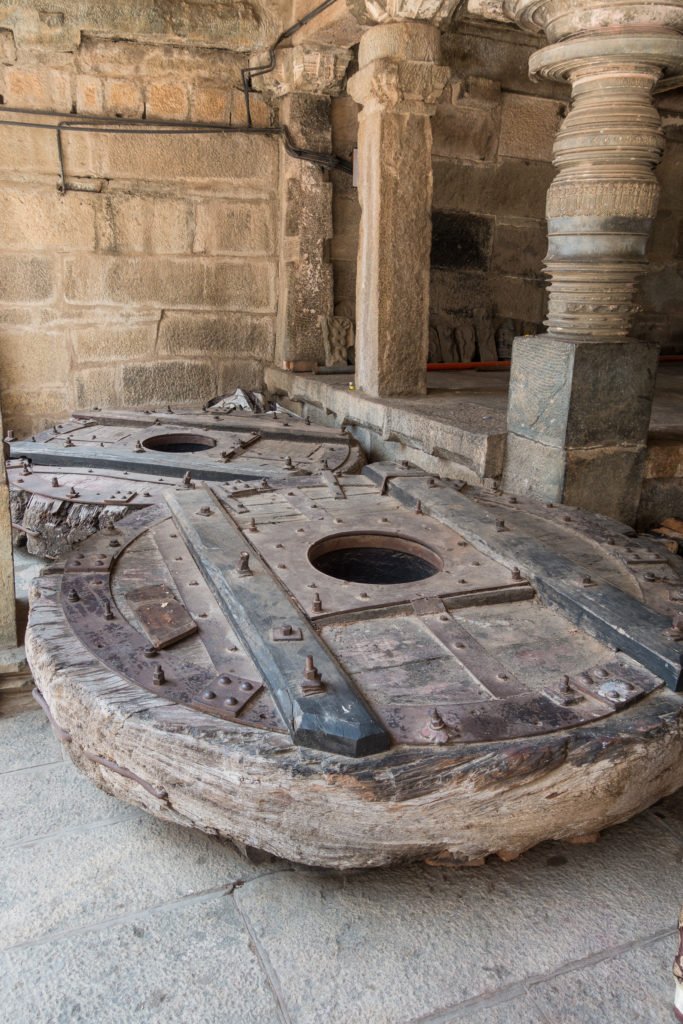
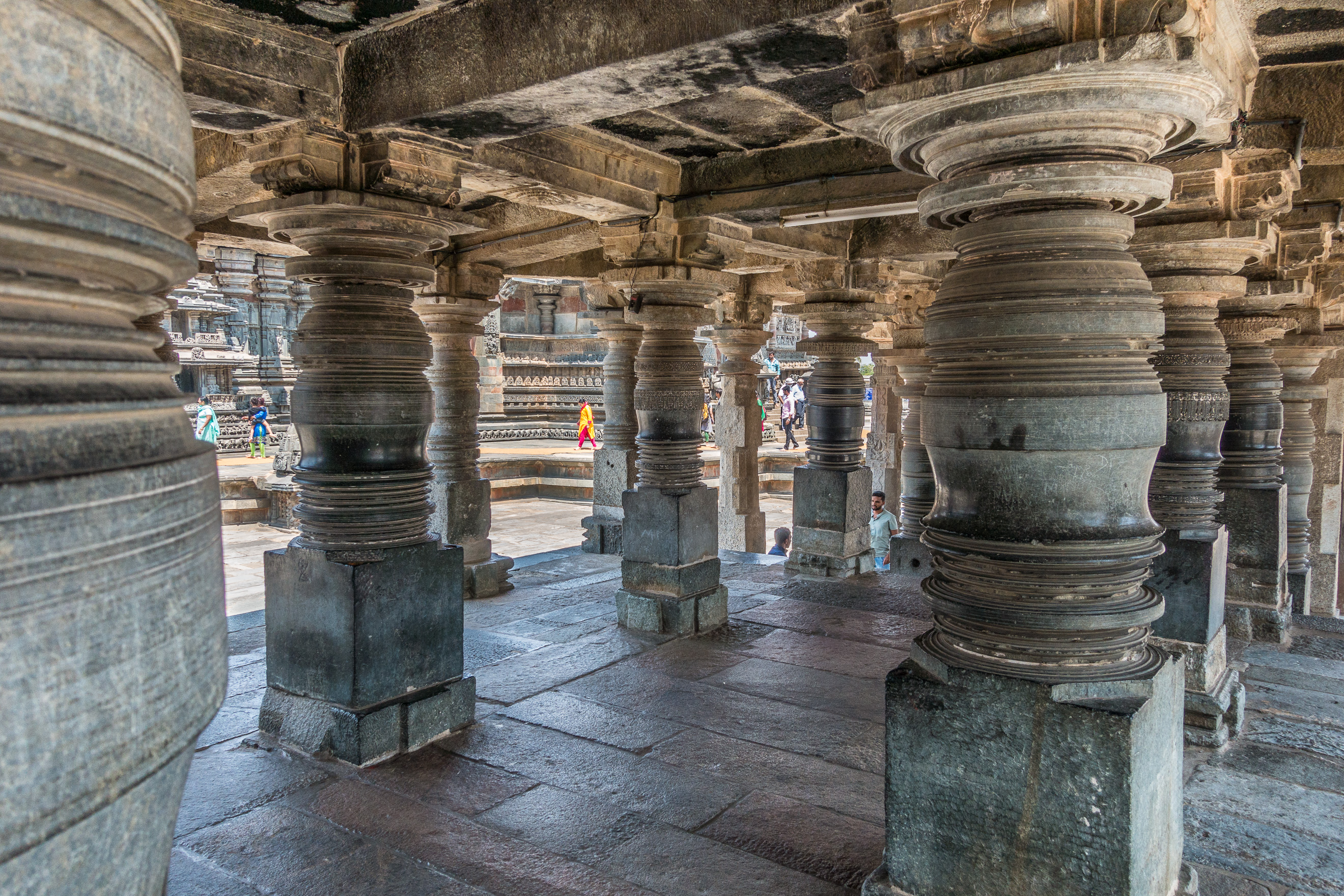
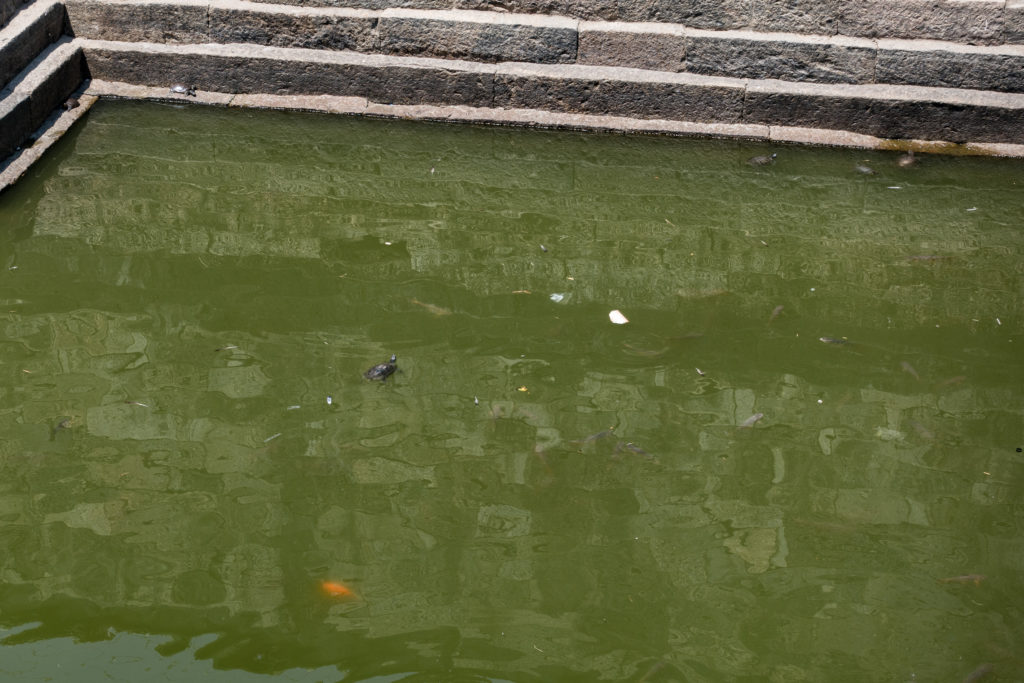
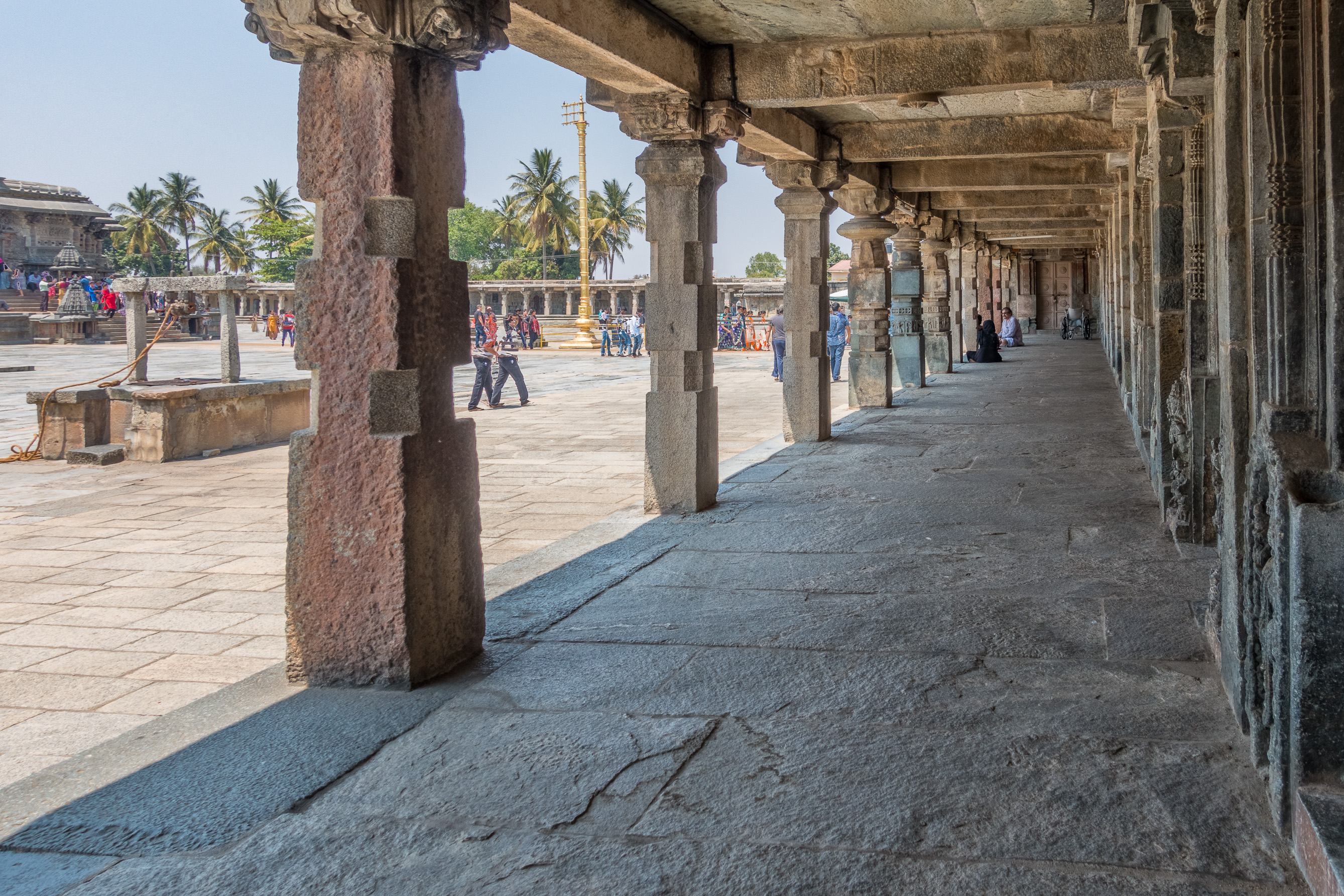
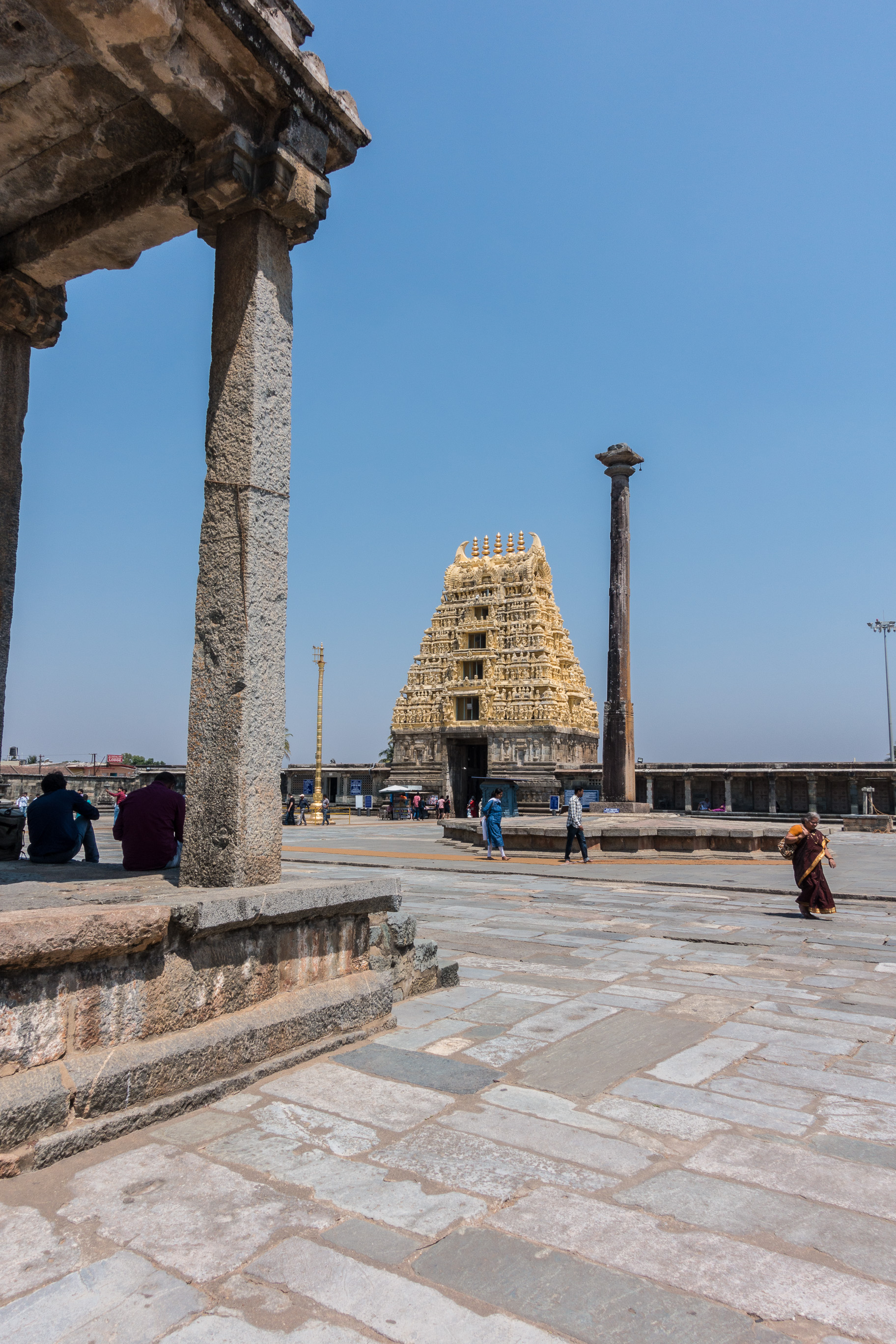
You must be logged in to post a comment.